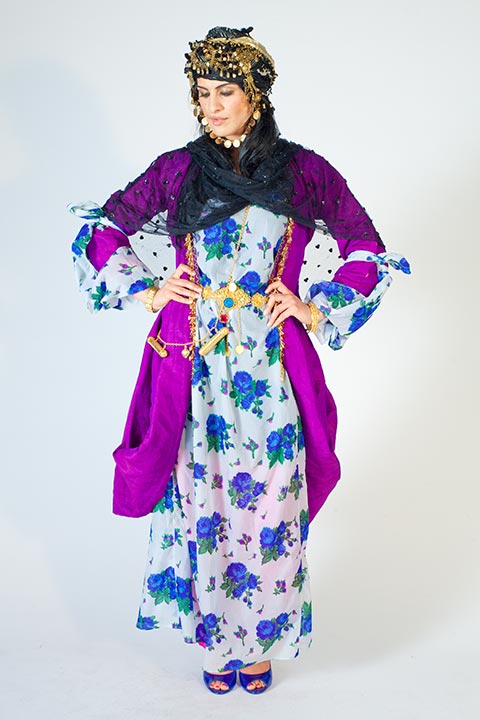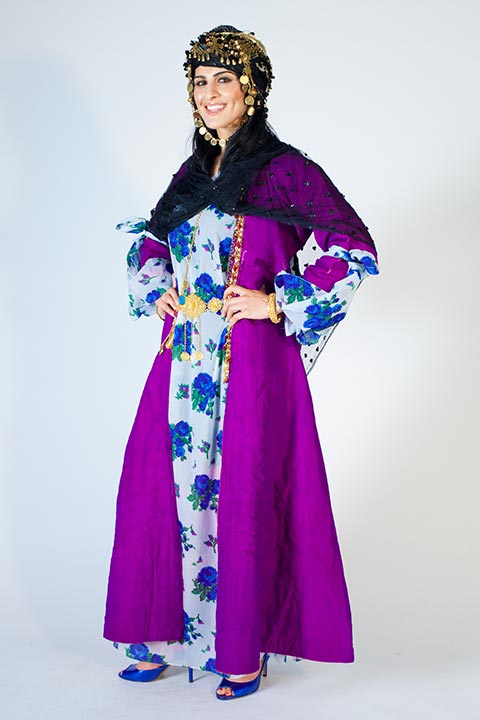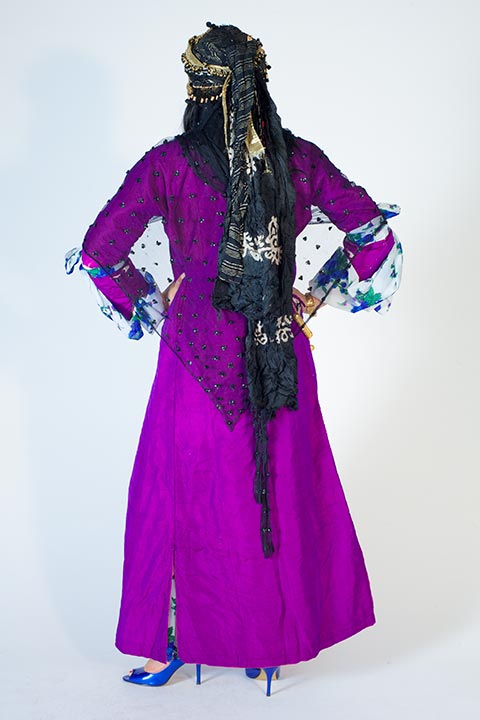Halabja
From the collection of Della Murad.
The Kawa was donated by Bahi Hami Bagi Jaff. The rest of the costume was worn by Della Murad’s mother.
Worn in 30s, 40s, 50s – everyday outfit.
Baggy trousers (Awal-krass) are worn under the dress (Krass). The trousers are made from any thick fabric, printed or plain. The Awal-krass shown here is made from a pink, plain shiny fabric called Surma. A thin slip (Jear-krass) made of cotton is worn over the baggy trousers. It is usually black or white.
The dress (krass) is made from a fabric called Krnak and can also have pink flowers instead of the blue shown. The coat (Kawa) is made of a fabric called Xamak, a thin cotton fabric. It would be padded with cotton and worn in winter. The corners of the coat would be lifted and placed in the pockets when the wearer was doing domestic work – both for ease of movement and to protect the garment.
The shawl (Dassmal) is a triangle shape and is made from a soft net. It is attached in the middle at the back to a hat. The hat (Fessa) was decorated with coins and fringing (called Gulang or Qazzaz). This would be attached to different fabrics (such as Sarkayi or an embroidered net fabric) and would be wrapped around the face until secure. The headpiece is then tied at the back with long strings. On each side of the hat are Lagera – two gold strands made from coins. At the front of the hat is a Parwana, a piece of gold jewellery designed by the Kurdish Jews from the region. The necklace is called Lulow-Zengir. It is a long thin gold chain, decorated with small gold bars and stones. It is worn across the body.
The belt is called Peshtweni-Lira. Made from Ottoman Lira, the number of coins used would depend on the size of the wearer (see jewellery section). At the centre of the belt is large circular piece decorated with semi precious stones and three dangling lira.
The bracelets (Bazani kurdi) are worn by all women in Kurdistan and can be either silver or gold.
Location Description
Near the border of Iran and Iraq. Place where most noble men and women from Kurdistan came from (e.g. Habsa Xani Naqib – opened the first school for girls in the area).





